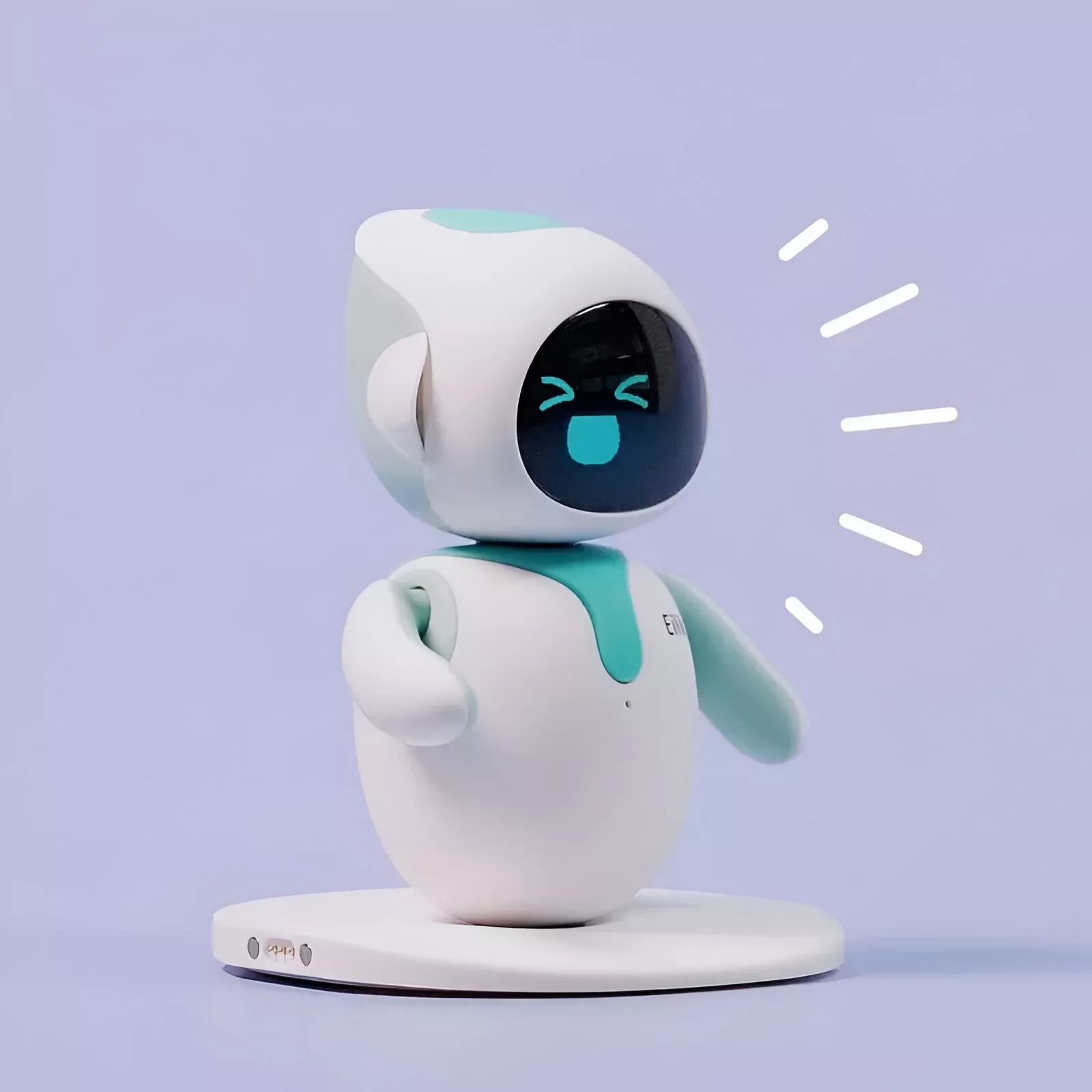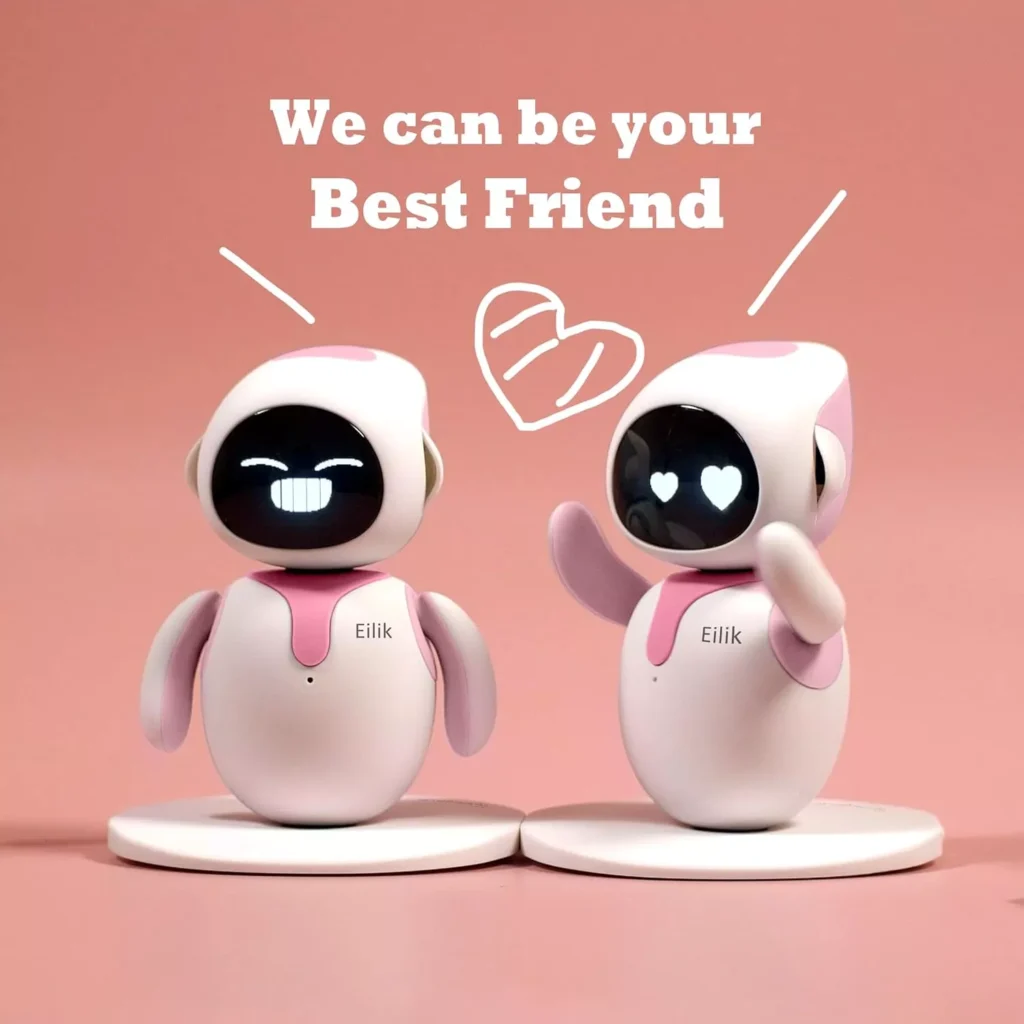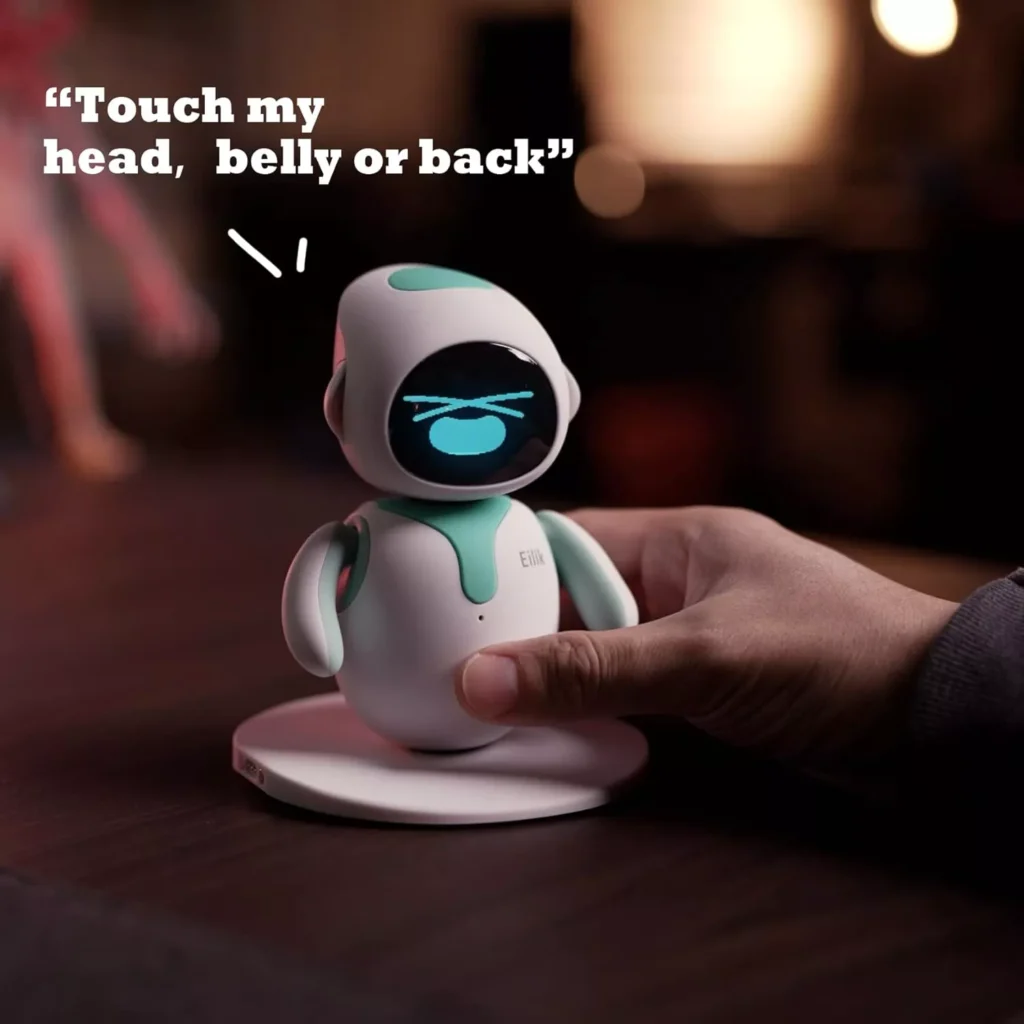-
Shop
- Advanced Technologies
- Bathroom
- Car Accessories
- Fashion
- Fashion Accessories
- Furniture
- Gadgets
- Health & Beauty
- Home & Garden
- Home Decor
- Home Electronics
- Home Supplies
- Kids & Babies
- Lighting
- Patio, Lawn & Garden
- Pet Supplies
- Pets
- Super Deals
- Popular
- Best deals
Emotional AI Robot Companion: 7 Amazing Joy‑Boosting Benefits

Market Trends & Projections for the Emotional AI Robot Companion
Dive into the global market, regional breakdowns, and growth drivers:
- Global Market Size & CAGR
The Global Emotion AI market is projected to hit $8.2 billion by 2030 at a 22.3% CAGR—underscoring surging interest in Emotional AI Robot Companion platforms KBV Research. - Regional Leaders
North America leads with early ed‑tech adoption; Asia–Pacific follows thanks to government investment in elder‑care robotics Business Insider. - Sector Breakdown
Education, healthcare, and smart‑home are top verticals—each adopt the Emotional AI Robot Companion for tailored engagement. - Key Drivers
Rising social isolation, personalized learning trends, and AAL (Ambient Assisted Living) boost demand ABI Research.
1. What Is an Emotional AI Robot Companion?
The Emotional AI Robot Companion is a smart, interactive robot designed to recognize and respond to human emotions in real time WIRED. Combining advanced AI, natural language processing, and expressive hardware, it serves as both a playmate for children and a supportive companion for adults meditechinsights.com. Unlike traditional toy robots, it adapts its responses based on facial expressions, tone of voice, and contextual cues, fostering deeper engagement and empathy. Its applications span educational enrichment, therapeutic support, and everyday assistance in homes, schools, and care facilities.

In an era of rising social isolation, companion robots address loneliness by offering consistent interaction—particularly in elder care, where they fill gaps left by caregiver shortages meditechinsights.com.
2. 7 Amazing Benefits of an Emotional AI Robot Companion
- Enhanced Learning through Play
Incorporating curriculum‑aligned activities, the companion delivers interactive lessons in math, language, and science, boosting retention by up to 30% WIRED. - Emotional Support & Well‑being
By recognizing stress or sadness, it offers comforting responses—playing music, telling jokes, or suggesting mindfulness exercises The New Yorker. - Social Skill Development
Children practicing conversational turn‑taking and empathy with the robot show improved social interactions in real life Market Report Analytics. - Therapeutic Applications
Used in autism support programs, the robot’s predictable interactions reduce anxiety and encourage communication Grand View Research. - Elder Care Assistance
Reminding seniors to take medication, prompting light exercise, and providing companionship helps reduce caregiver burden meditechinsights.com. - Customizable Personalities
Users can tailor the robot’s “mood” and interests—choosing between playful, curious, or calming modes. - 24/7 Availability
Unlike human caregivers, the robot can operate continuously, ensuring consistent support and engagement.

Outperforming static toys, this dynamic companion keeps users motivated through personalized feedback.
3. Key Features Explained
3.1 Emotion Recognition
High‑resolution cameras and microphones detect facial expressions and vocal tone with 90%+ accuracy Global Market Statistics.
3.2 Natural Language Processing
Built‑in NLP modules allow fluent conversation across multiple languages, adapting vocabulary for age and context GitHub.
3.3 Adaptive Learning Algorithms
Machine learning models track user progress, customizing difficulty levels in games and lessons.
3.4 Mobility & Gestures
Wheeled or legged designs enable simple navigation; expressive LED eyes, arms, and head movements convey emotions.
3.5 Safety Protocols
Compliant with CE and FCC standards, it uses obstacle detection to avoid collisions and encryption to secure data.

These features work together to create a lifelike, responsive experience unmatched by static devices.
4. How Emotional AI Works
The Emotional AI Robot Companion leverages a three‑step process:
- Sensing: Cameras and microphones capture real‑time data.
- Processing: Edge‑AI chips run emotion‑classification models in under 200ms.
- Responding: Pre‑scripted and generative responses are selected based on confidence scores, then executed via speech, movement, or display.
External research shows emotional AI response accuracy improving by 25% annually Business Research Insights. Continuous over‑the‑air updates ensure the robot stays current with the latest emotion‑AI breakthroughs.
5. Use Cases & Scenarios
- Family Homes: Morning routines—wake‑up greetings, breakfast reminders, weather updates Global Market Insights Inc..
- Classrooms: Group activities where the robot guides discussions or quizzes students.
- Therapy Clinics: Structured social skills training for children on the spectrum.
- Senior Living Facilities: Memory games, health check‑ins, and conversational companionship meditechinsights.com.

For more details, visit our product page to see demos and specs.
6. Safety, Privacy & Ethics
The design prioritizes user well‑being:
- Data Privacy: All processing occurs locally; no personal data is stored in the cloud.
- Consent Controls: Guardians can approve interaction modes via a secure app.
- Ethical AI: Transparent emotion‑detection algorithms audited by third parties Time.
These measures ensure responsible deployment in sensitive settings such as schools and care homes.
7. Comparing to Other Robots
| Feature | Emotional AI Robot Companion | Typical Toy Robot | High-End Humanoid |
|---|---|---|---|
| Emotion Recognition | ✓ | ✗ | ✓ |
| Adaptive Learning | ✓ | ✗ | ✓ |
| Local Data Processing | ✓ | ✓ | ✗ |
| 24/7 Operation | ✓ | ✓ | ✗ |
| Price Range | Mid ($600–$1,200) | Low (<$100) | High (>$2,000) |
While humanoids like Hanson Robotics’ Sophia excel socially WIRED, our companion strikes a balance of affordability, safety, and functionality.
8. How to Choose Your Emotional AI Robot Companion
- Assess Needs: Education vs. therapy vs. elder care.
- Budget & Features: Decide on mobility, battery life, and personalization.
- Trial & Warranty: Look for at least a 30‑day return policy.
- Expandability: Check for third‑party skill and app integration.
For full specs, check our detailed comparison guide and user reviews.
9. Conclusion
The Emotional AI Robot Companion is more than a toy—it’s a revolutionary platform for learning, therapy, and emotional well‑being. With proven benefits across ages, robust safety features, and market growth projected at nearly 18% CAGR through 2033 Business Research InsightsGrand View Research, now is the perfect time to welcome this companion into your home or facility.
10. FAQs
Q1: Is it safe for children under 5?
Yes—sensor limits and guardian‑controlled modes ensure age‑appropriate interaction.
Q2: Can multiple users personalize profiles?
Absolutely. Up to five distinct profiles can be created in the companion app.
Q3: Does it require an internet connection?
Basic functions work offline; advanced features such as remote updates need Wi‑Fi.
Q4: What languages are supported?
English, Spanish, German, French, Mandarin, Japanese, and more via future updates.
Ultimate Portable Juicer: 5 Power Health Benefits
Apr 14, 2025










Leave a comment